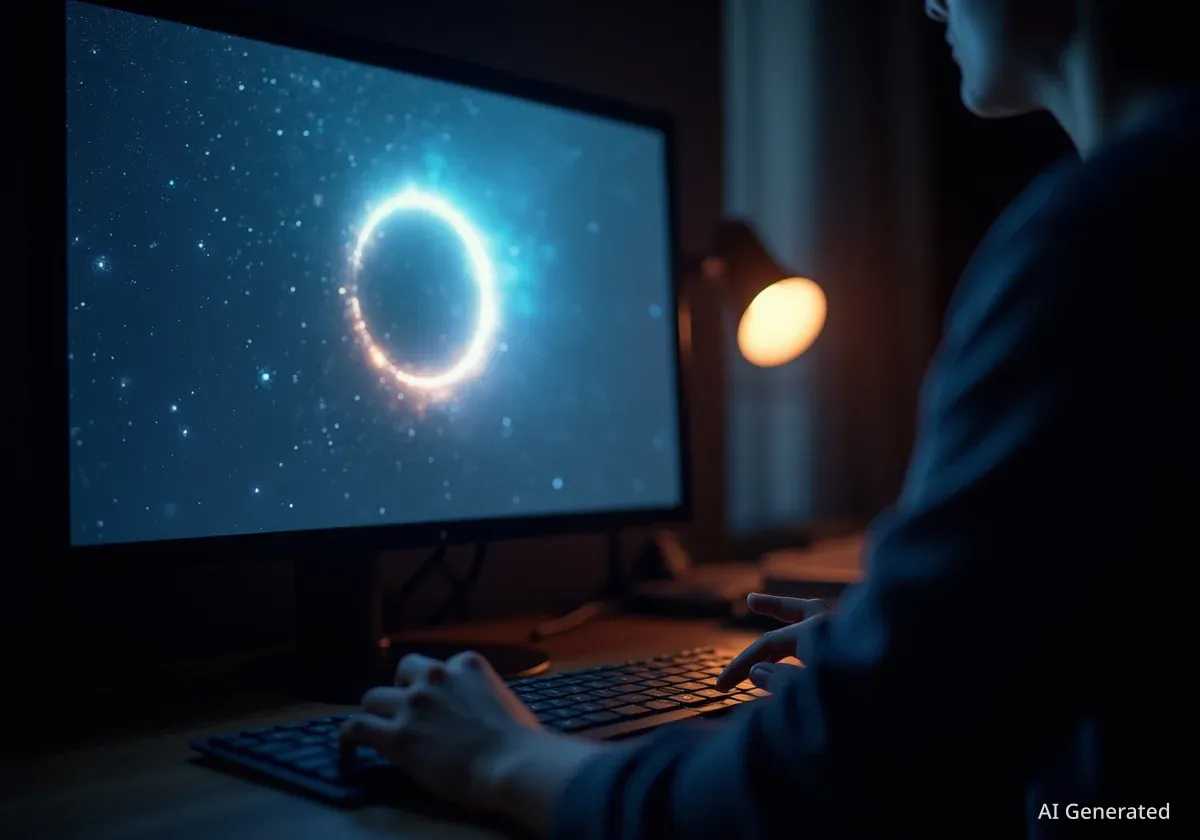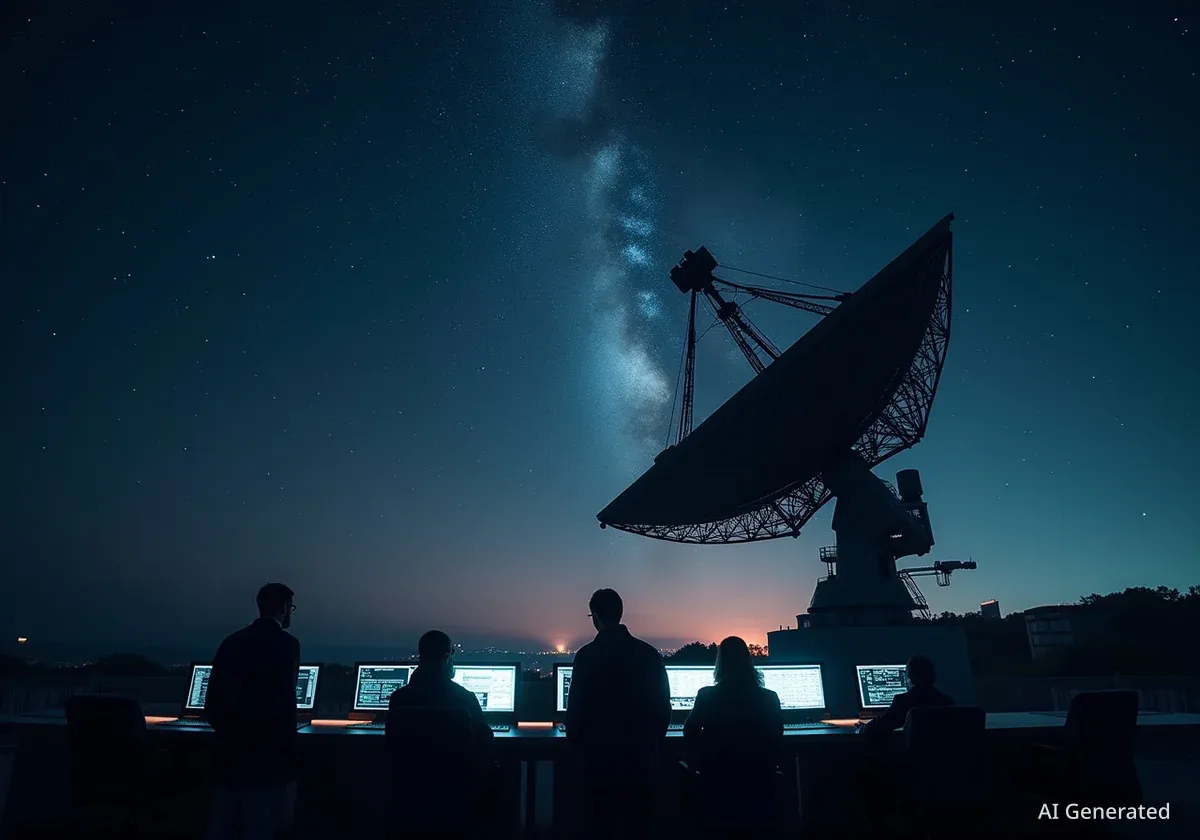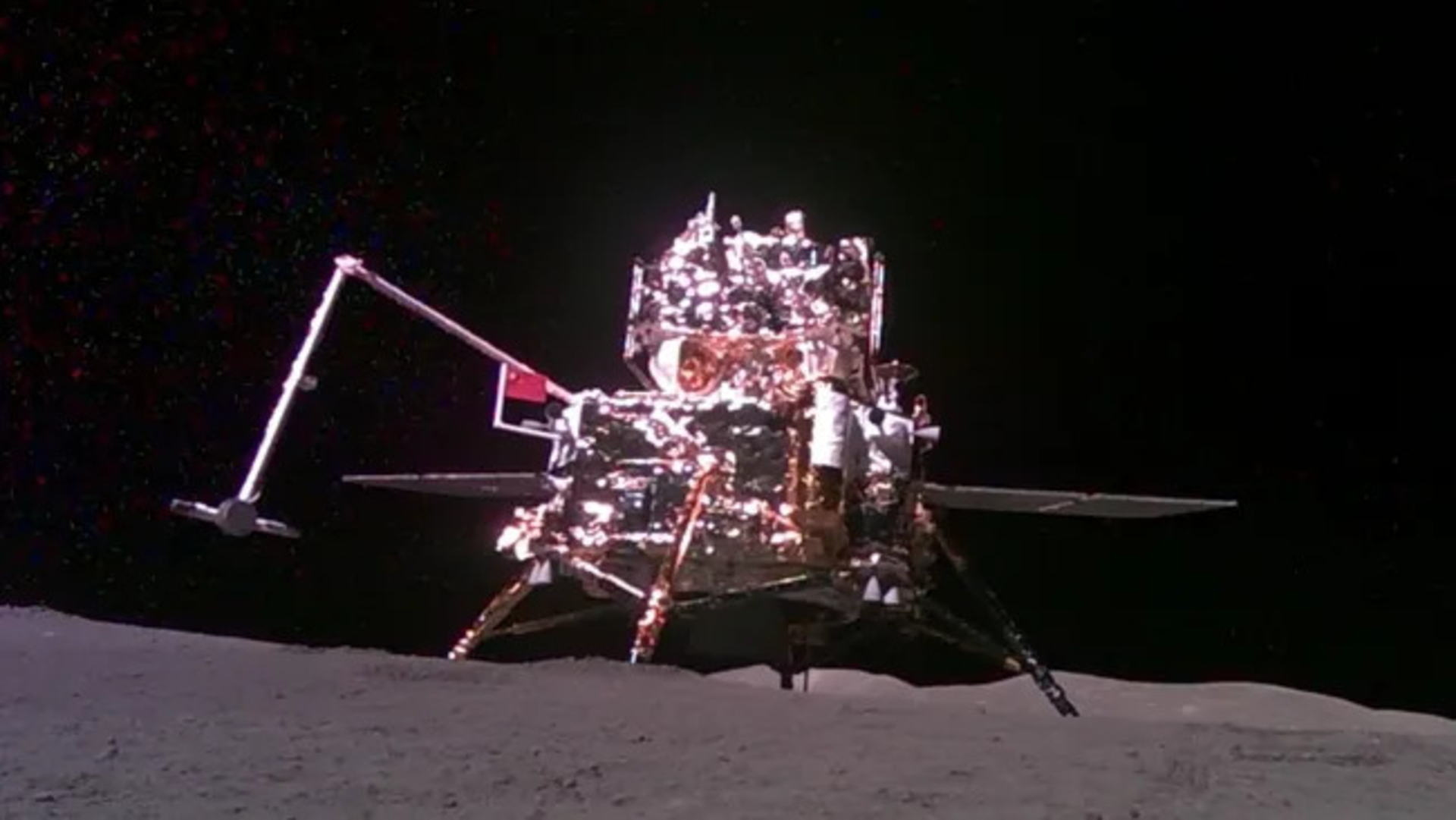A team of volunteer citizen scientists has identified the most distant and powerful cosmic structure of its kind, known as an Odd Radio Circle (ORC). The object, designated RAD J131346.9+500320, consists of two massive, overlapping rings of radio emissions surrounding a distant galaxy. This discovery offers a unique view of the universe as it was approximately 7 billion years ago.
The finding was made by participants in the RAD@home Astronomy Collaboratory, a citizen-science initiative based in Mumbai, India. This marks the first time an ORC has been discovered through public participation, highlighting the value of human observation in identifying complex astronomical patterns.
Key Takeaways
- A new Odd Radio Circle (ORC), RAD J131346.9+500320, has been discovered by citizen scientists.
- It is the most distant and powerful ORC found to date, seen as it was when the universe was half its current age.
- The structure features a rare double-ring formation, with each ring measuring about 300,000 light-years in diameter.
- The discovery was made using data from the LOFAR radio telescope network and published in the Monthly Notices of the Royal Astronomical Society.
- ORCs are mysterious phenomena, and this finding may provide clues about galaxy evolution and the activity of supermassive black holes.
Details of the New Odd Radio Circle
The newly identified structure, RAD J131346.9+500320, is a remarkable example of an Odd Radio Circle. These are enormous, faint rings of radio waves in space whose origins remain largely unexplained since their initial discovery just six years ago. This particular ORC is notable for several reasons.
Firstly, its immense distance means astronomers are observing it at a time when the universe was only half its present age of 13.8 billion years. This provides a valuable window into the cosmic conditions of the distant past. Secondly, its structure is exceptionally rare, composed of two intersecting rings. This double-ring configuration has only been observed once before among the handful of known ORCs.
By the Numbers
- Universe Age at Emission: ~6.9 billion years old
- Individual Ring Diameter: ~300,000 light-years
- Total Radio Cloud Size: Nearly 3 million light-years
- Size Comparison: Most ORCs are 10 to 20 times larger than the Milky Way galaxy.
The two rings are embedded within an even larger cloud of radio emissions that spans almost 3 million light-years. The scale of these structures is difficult to comprehend, dwarfing our own galaxy and pointing to an incredibly energetic event in the host galaxy's history.
The Role of Citizen Science in Astronomy
This discovery is a significant achievement for citizen science. It was made by volunteers participating in the RAD@home Astronomy Collaboratory, who visually inspected complex astronomical data. These participants scanned deep space maps created from the LOFAR (Low-Frequency Array) telescope, a network of radio antennas primarily located in the Netherlands.
Human eyes are often better at recognizing unusual or unexpected patterns than automated computer algorithms, which are typically trained to find specific, known types of objects. This collaborative approach between professional astronomers and the public proved essential in identifying the faint, complex shape of the double-ringed ORC.
"ORCs are among the most bizarre and beautiful cosmic structures we've ever seen," stated Ananda Hota, founder of the RAD@home program. "They may hold vital clues about how galaxies and black holes co-evolve, hand-in-hand."
The success of the RAD@home program demonstrates that large datasets from modern telescopes can be effectively processed with the help of a dedicated community of volunteers, accelerating the pace of discovery.
The Mystery of Odd Radio Circles
Since ORCs were first detected, their origin has been a subject of intense scientific debate. They are only visible to radio telescopes and appear as giant circles in the sky with no obvious optical, infrared, or X-ray counterparts at their centers. Several theories have been proposed to explain their formation.
Potential Causes of ORCs
Scientists are exploring several hypotheses for what creates these massive radio structures:
- Galactic Shockwaves: They could be the expanding spherical shockwaves from a cataclysmic event in a central galaxy, such as the merger of two supermassive black holes.
- Powerful Galactic Winds: Another theory suggests they are formed by powerful winds, or outflows, from a star-forming galaxy. These winds could blow material out into intergalactic space, creating a shell-like structure.
- Jets from a Black Hole: They might be related to the jets of energetic particles fired from a supermassive black hole, viewed from a specific angle that makes them appear circular.
The double-ring structure of RAD J131346.9+500320 could suggest two separate explosive events occurred in the host galaxy, or a single event that produced a more complex shockwave. Further study is needed to determine the precise mechanism.
Broader Implications for Galaxy Evolution
The RAD@home program also identified two other related radio structures, providing further evidence of the complex ways galaxies interact with their surroundings. One object, RAD J122622.6+640622, features a jet from its core that curves sharply, inflating a ring of radio light 100,000 light-years wide. Another, RAD J142004.0+621715, also shows a ring at the end of a jet.
These findings suggest that ORCs are not isolated oddities but part of a larger family of structures created by galactic activity. They show that the influence of a galaxy, particularly its central black hole, can extend millions of light-years into the space around it.
"ORCs and radio rings are not isolated curiosities," explained Pratik Dabhade, a coauthor of the study from the National Centre for Nuclear Research in Poland. "They are part of a broader family of exotic plasma structures shaped by black hole jets, winds, and their environments."
By studying these distant and massive structures, astronomers hope to gain a better understanding of the feedback loop between galaxies and the intergalactic medium. This process is crucial for regulating star formation and shaping the large-scale structure of the universe.





